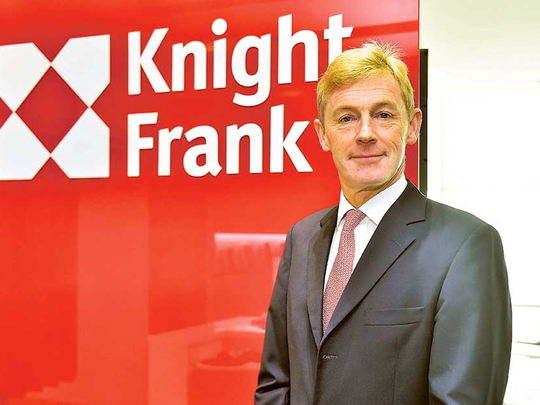
Dubai: The UK government has signalled a “hard Brexit” approach to its parting of ways with the EU, but as far as London realty is concerned, it moves on with a soft touch. None of the doomsday predictions of varying intensities have come true to date on how investors — existing and future ones — might have on their exposures to the UK property market.
And that status should continue, according to a top official with the global consultancy Knight Frank. “On the demand side, the volume of prospective residential buyers registering in the prime market through July and August has been consistently higher than in 2015,” said Alistair Elliott, Senior Partner and Group Chairman. “We expect this rise to feed through to an improvement in sales volumes in the final quarter of this year.
“However, we don’t expect annualised growth as the higher stamp duty rates on prime residential property introduced last year — and the additional rate of stamp duty on second homes and investment properties introduced in April — have reduced liquidity below the levels we saw before 2015.”
The fallout, if it can be called that, from Brexit has been capped to a tight range. “While the EU referendum result clearly contributed to a downturn in pricing, sentiment and activity volumes, our experience confirms it is important not to overstate this impact,” said Elliott. “In the prime UK residential sales market (750,000 pounds and more), there has been a 20 per cent fall in the number of exchanges since the referendum compared with the same period last year.
“Despite this weakness in sales, the number of offers being made on properties is only 6 per cent lower and the number being accepted by vendors is actually 5 per cent higher than a year earlier.”
Incidentally, London realty had already gone through a fair bit of unwinding in the first six months of the year, brought about by the stamp duty introductions and the fact that investors — particularly the overseas ones — were concerned that prime property values were already highly inflated, according to market sources. It induced more caution on the part of investors — and sellers — and has also helped them take Brexit in their stride.
The “greatest hesitancy in residential markets is around second-hand homes where volumes are down year-on-year,” said Elliott. “In contrast, off-plan sales, especially in the London market, are at historically relatively healthy levels.”
Even within the city’s commercial space, and more so at the top end of the office market, the sentiment is more geared towards business as usual. Worries about a flood of departures of businesses from the financial district hasn’t materialised. But the overall transactional activity remains subdued after an extremely robust show in 2015.
“There has been 996,000 square feet of take-up in Central London since the Referendum involving 50,000 units, 77 per cent of which Knight Frank has acted on,” said Elliott. “In the commercial property market, the immediate aftermath of the Referendum led to concerns that drove a sharp adjustment in REIT (real estate investment trust) prices and the suspension of trading in a number of daily-priced retail funds.
“However, this initial financial market reaction corrected quickly, with Reits reversing much of their falls and retail funds working through strategies to reopen. This shock to the investment market should be considered in the context of industry trends already in motion in the first half of 2016, which had already seen a slowing of investment volumes following a record year in 2015.
“Pricing was also already softening in many markets as is consistent with the late phase of the cycle.
“Whilst a few transactions were aborted because of the EU referendum, many continued, albeit at a slower pace, as investors took time to assess the changing economic environment.”
During July and August, Knight Frank was involved in transactions with an aggregate value 47 per cent lower than for the same two-month period in 2015.
“This is consistent with the wider market for the first half of the year, with 2016 volumes 45 per cent lower than prior year,” the Chairman added. “Levels of interest from investors to trade their assets remain high and a slowing of the rate of decline in values from -2.7 per cent in July to -0.7 per cent in August has reduced concerns of a steep cycle.”











